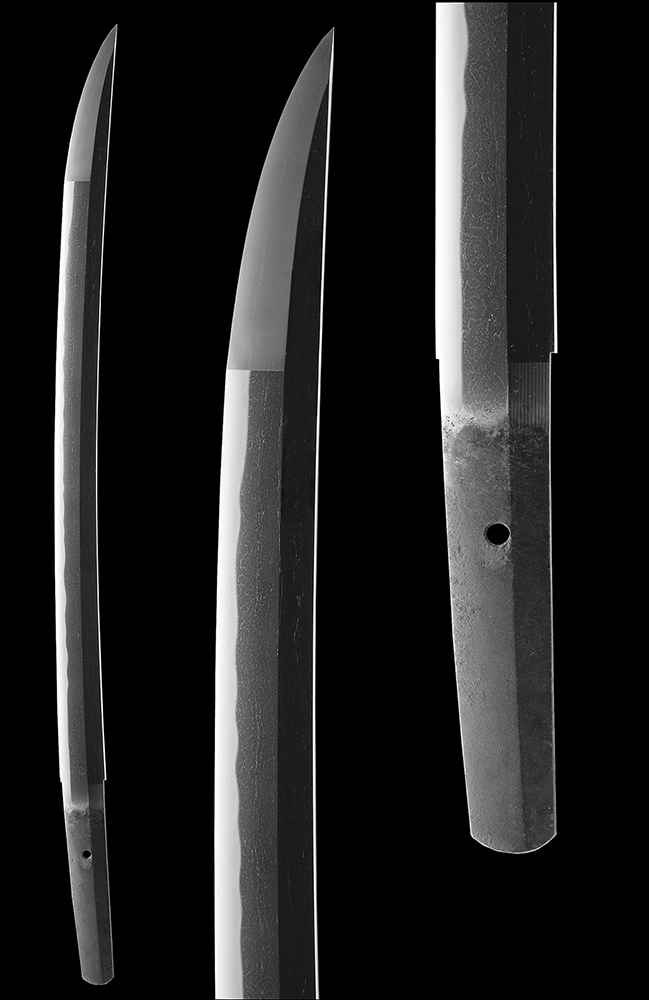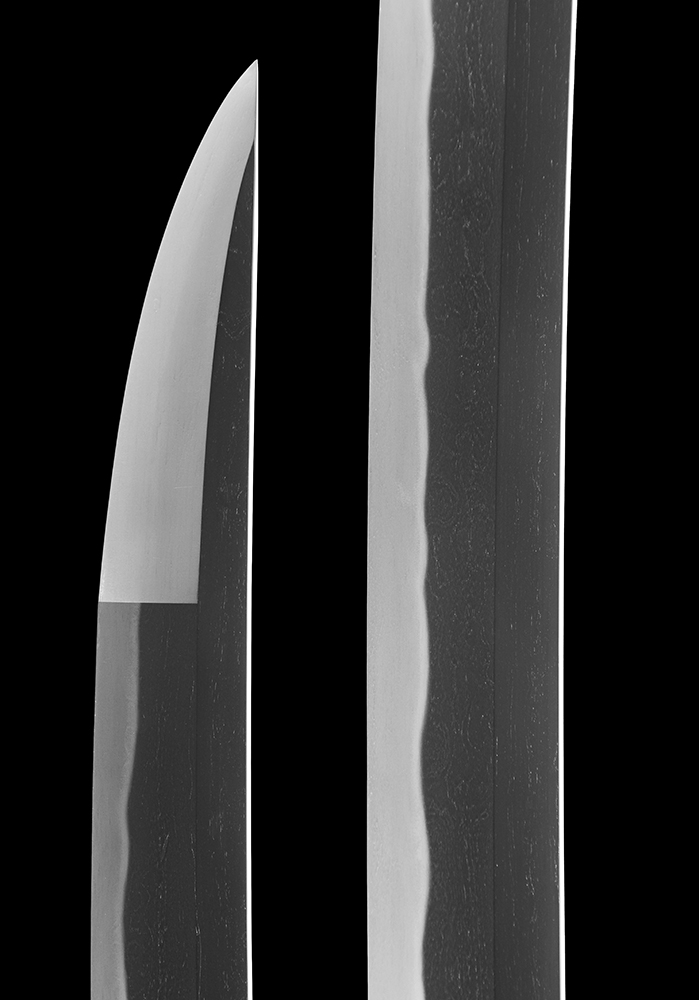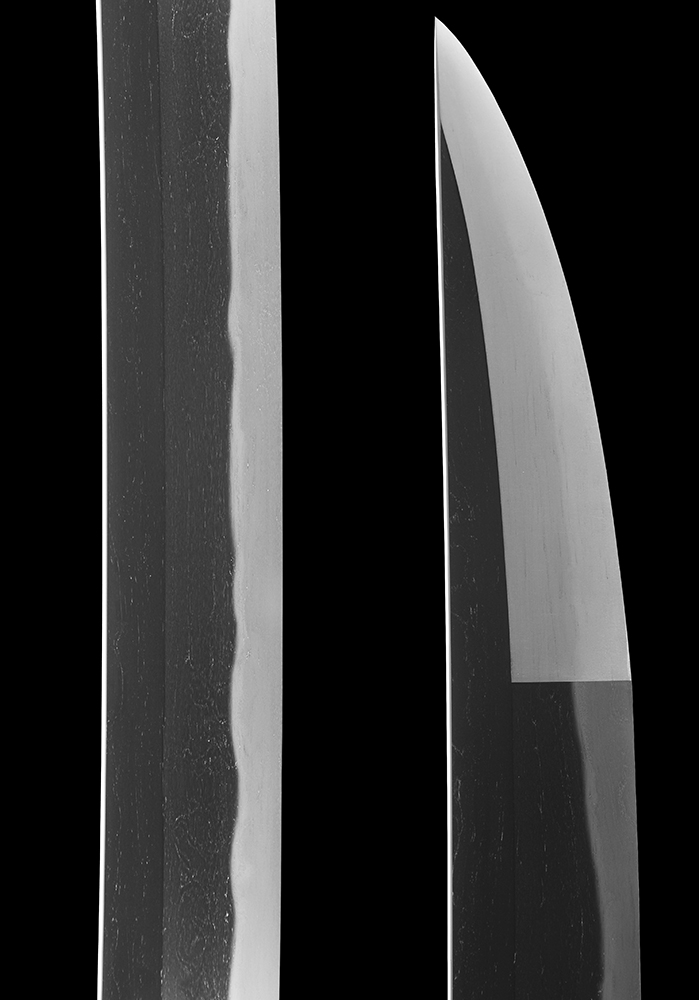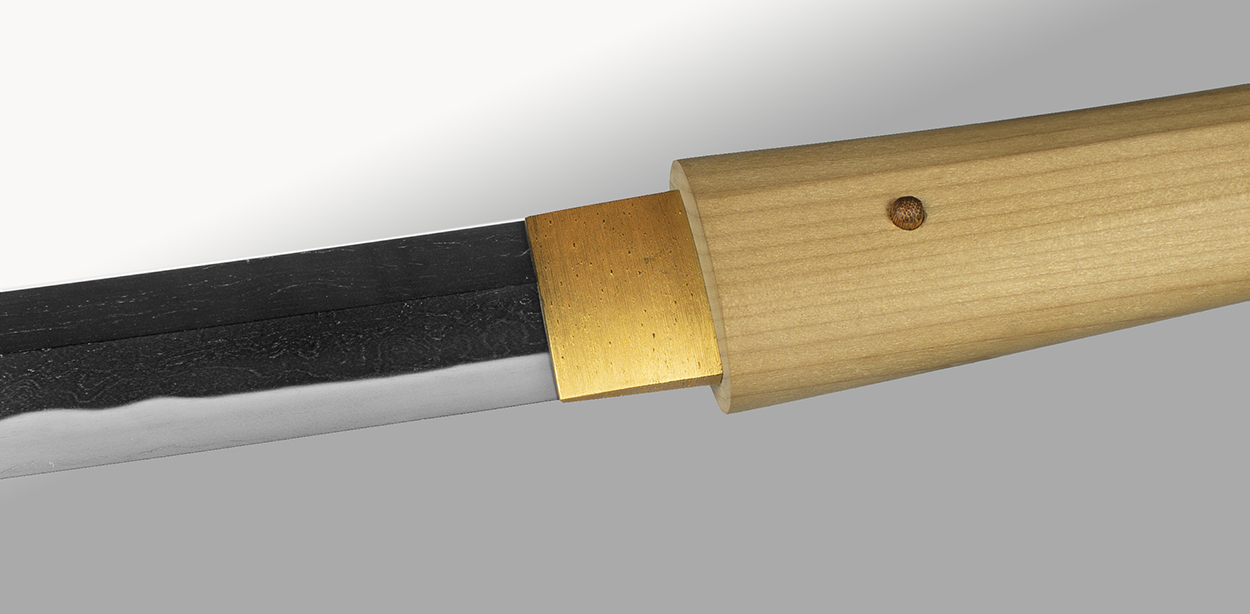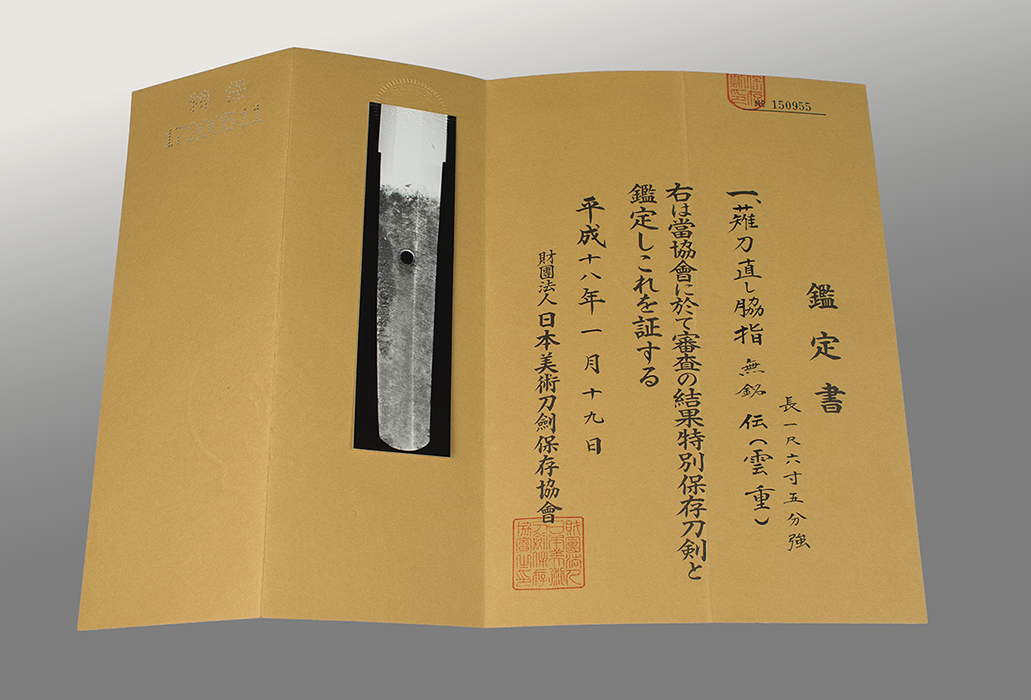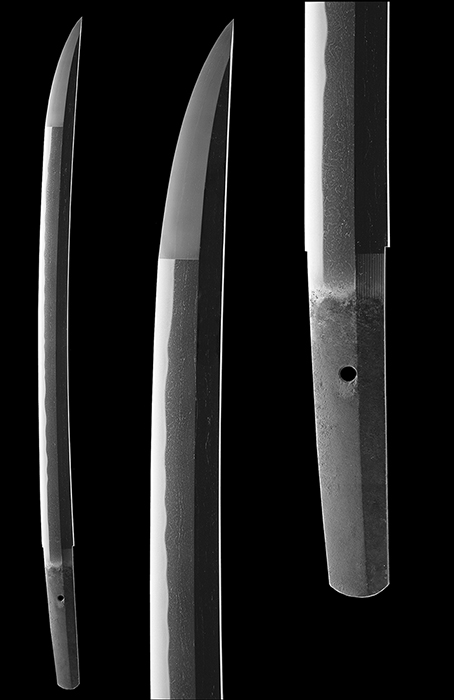|
| |||||||||||||||||||||||||||||||||||||||||||||||||
Kitae : Itame with mokume that is flowing. Masame is mixed in and is especially evident in the ha. Nie utsuri can be seen in the monouchi.
Hamon : Nioi-deki gunome midare. The nioi guchi is tight. There are nezumi ashi and they are slanted upward. Normal ashi can also be seen.
Boshi : Yakizumi and hakikake.
About this sword : This work has been attributed to Unju. He was active around Bunwa to Oan (1352 - 1375) and was the son of the 2nd generation Unsho. The founder of this school was Unsho. Unsho and the 1st Unji originally were using the names of Kunitomo and Kuniyoshi. They made a blade for Emperor Godaigo with a "cloud like" hamon some time between 1293-1307. Due to the Emperor's delight with the work, he granted them both new names. Unsho meaning "born of the clouds" and Unji meaning "came from the clouds". Incidentally, Unju's name means "a bounty of clouds".
This school started in Yamashiro Kuni and later moved to Ukai in Bizen. A flavor of Yamashiro mixed with Bizen can be seen in their works. We can see that in this blade. The utsuri has a midare "foot print" but is made of ko-nie. In addition, there are saki ashi with a nioi-guchi that is tight and consistent with an overall "calm" hamon outline in comparison to Osafune or Ichimonji.
This blade was originally a nagamaki. Nagamaki were large pole arms with a long tsuka, wrapped with ito-maki. Such a blade was well suited for long sweeping strokes and highly effective against mounted samurai. Those that survived the wars of the 14th century were often cut down to be used as swords in the late Muromachi period. A re-shaped nagamaki is called a "nagamaki-naoshi". The similar term, "naginata-naoshi", is often used to label all o-suriage pole arms that are not yari. This practice also applies to the description titles we see used on sword papers. Those that have naginata-hi or evidence of naginata-hi remaining are "naginata-naoshi". Normally, they also show more curvature than nagamaki. Those that have no naginata-hi and less sori are "nagamaki-naoshi".
This blade is remarkably healthy and in excellent condition. It was discovered in Florida as a WWII souvenir brought back by a GI. Ex Dr. Tsuguyasu Wada collection. Polished by Jimmy Hayashi. The habaki and shira-saya were made by Brian Tschernega.
In blades of this age we expect to see some ware or coarse hada. This sword is remarkably healthy and very carefully made. There are no kizu and not even an hint of shintetsu can be seen. This sword was published in the 12th Kokusai Tosogu Kai catalog in 2016. It is a featured sword in the book "Japanese Swords from American Collections Vol 1". This book is due to be published in 2019. An outstanding sword in all regards.
HOLD

